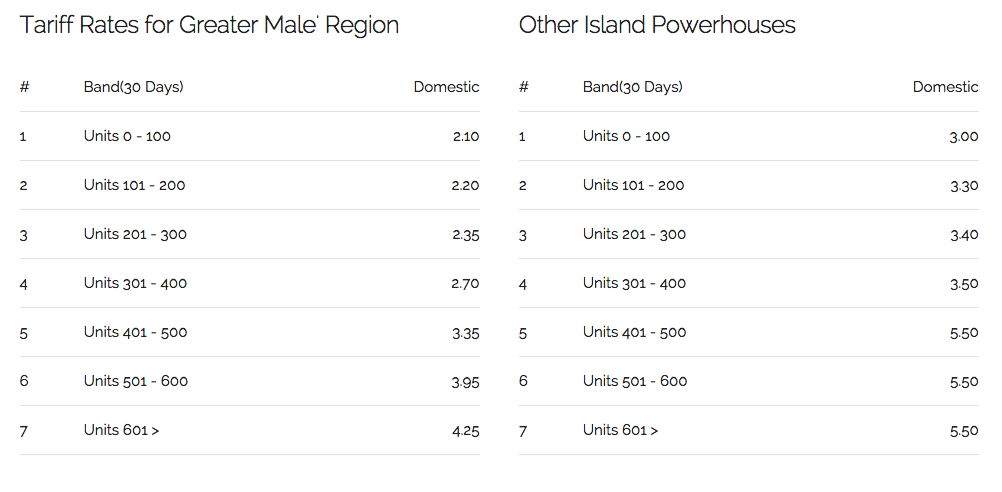Households across the Maldives are facing higher electricity bills in March after the government revised tariff rates and decided to discontinue electricity subsidies beginning next month.
The new rates were announced at a joint press conference yesterday by the energy ministry, the State Electricity Company, Fenaka Corporation, and the National Social Protection Agency.
Aside from the capital Malé and its suburbs Hulhumalé and Vilimalé, the electricity tariff has been harmonised to a standard rate for all other inhabited islands.
In the Greater Malé Region, the rates for usage below 400 units have been lowered by up to 25 laari, whilst the rate for usage above 400 units have been raised by 40 laari. But in the absence of the electricity subsidy, March’s electricity bill for all households will increase by more than 20 percent.
According to figures released by the energy ministry today, households in the Malé region who use 100 units will see an increase of about MVR60 a month.
- 200 units – an increase of MVR110
- 300 units – an increase of MVR130
- 400 units – an increase of MVR150
- 500 units – an increase of MVR243
In the rest of the country, customers in the domestic category who use 100 units will see an increase of about MVR80.
- 200 units – an increase of MVR135
- 300 units – an increase of MVR125
State Minister for Energy Abdul Matheen told the press yesterday that about 89 percent of households in the atolls use less than 400 units per month. But STELCO, the state-owned company that provides electricity in the Malé region, has not revealed the average usage of households in the capital.
According to the Fenaka Corporation, the state-owned utility company that manages island powerhouses, households with usage below 400 units will not have to pay a fuel surcharge as long as the price of diesel remains below MVR10.75 per litre.
The State Trading Organisation, the main importer of oil in the Maldives, reduced the price of diesel from MVR9.25 per litre to MVR9.05 per litre this week, because of oil prices falling below US$30 per barrel,
Matheen meanwhile said the changes will save about MVR700 million (US$45.4million) from the government’s recurrent expenditure this year.
“Last year MVR716 million was provided as subsidies. With the change in the price of electricity, STELCO will become a company that operates without a government subsidy,” he said.
The electricity tariff was last revised in 2009 under former President Mohamed Nasheed’s administration, which also introduced electricity subsidies in the same year.
Targeting subsidies to the needy has been a longstanding recommendation of the International Monetary Fund.
In April last year, hundreds of people in the capital queued for hours to submit forms after the government announced plans to target the electricity subsidy to the poor.
However, after extending a deadline for submission, the government did not implement the policy.
The government meanwhile stood by its decision to cut subsidies for businesses in the atolls last year, a move that sparked protests across the country after bills at shops and restaurants doubled and even tripled in some cases.
The change in electricity charges can be calculated via the energy ministry website.

Additional reporting and writing by Mohamed Saif Fathih